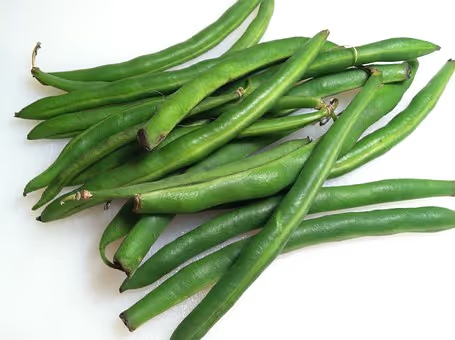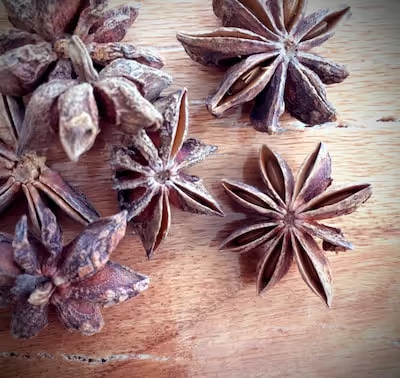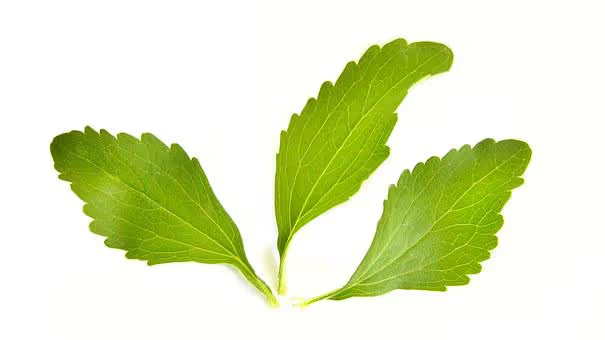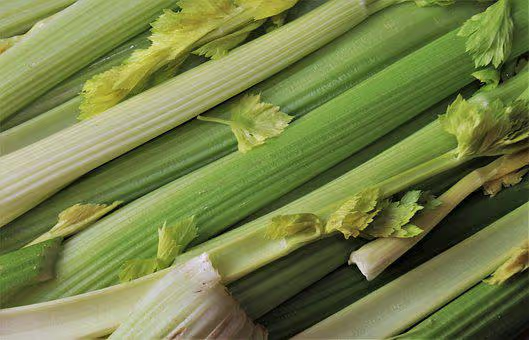Growing Kidney Beans: A Simple Guide for Healthy Harvests

Growing Kidney Beans
Growing kidney beans rewards you with hearty yields and vibrant pods if you sow seeds in well-draining, nutrient-rich soil after the season's last frost. Kidney beans adore sun-drenched garden plots, demanding at least six hours of direct sunlight daily to thrive. Time your planting smartly and take the guesswork out of cultivating this versatile bean—read on for simple gardening methods that guide you from planting to harvest.
Cheatsheet: Kidney Bean Planting & High-Yield Harvests
🌱 Site & Soil
- Full sun (6-8 hours daily)
- Well-drained, loose soil (pH 6.0-7.0)
- Sow after soil warms to 65°F/18°C
🌡️ Planting
- Sow seeds 1.5 in (4 cm) deep, 4 in (10 cm) apart
- Rows: 18-24 in (46-61 cm) apart
- No pre-soaking required
💧 Water & Care
- 1 in (2.5 cm) water/week; keep soil moist, not wet
- Mulch: retain moisture, suppress weeds
- No high-nitrogen fertilizer; beans fix their own nitrogen
- Support bush types if heavy with pods
🦠 Pests & Problems
- Rotate crops yearly (reduce disease risk)
- Watch for aphids, Mexican bean beetles
- Pull weeds quickly to boost airflow
🌾 Harvest & Storage
- Ready in 100-110 days (pods dry, rattle when shaken)
- Pick entire plant, hang upside down in dry spot
- Shell beans, dry until hard for long storage
🥗 Nutrition & Self-Sufficiency
- High in protein, fiber, iron, folate
- Store easily for winter meals
- 1 cup cooked: 15g protein, 13g fiber
🛠️ Tools and Products You’ll Need
- Kidney bean seeds
- Hoe or hand trowel
- Mulch (straw, leaves)
- Garden gloves
- Stakes or row covers (if pests/heavy pods)
- Drying trays or mesh bags
🔄 Step-by-Step Process
- Prepare sunny, loose soil beds
- Sow seeds after last frost
- Thin seedlings to avoid crowding
- Weed & mulch regularly
- Water consistently, avoid soggy roots
- Harvest when pods are fully dry
- Dry & store beans in airtight containers
-
Growing Kidney Beans: A Simple Guide for Healthy Harvests
I time sowing for late spring, once soil stays at 65 to 85 F, 18 to 29 C, and all frost risk is gone. Cool, wet starts stunt seedlings and invite rot.
I aim for full sun and fertile, well drained loam with a pH of 6.2 to 7.2. Heavy clay gets loosened with compost and a little coarse sand for structure.
Choose the right type and days to maturity
Bush kidney beans finish faster and fit small beds, while pole types climb and keep setting pods longer. Expect 90 to 120 days to dry stage, depending on variety and heat units.
Dark red kidney, light red kidney, and cannellini all fall within Phaseolus vulgaris. I pick short-season lines for cool zones and virus-resistant strains for humid summers.
Seed quality and inoculation
I plant fresh, disease-free seed and dust it with a Rhizobium phaseoli inoculant if the bed is new to beans. Better nodulation means steadier growth without heavy nitrogen.
Damaged seed feeds soil fungi, so I discard any cracked or wrinkled kernels. I learned that lesson the hard way one wet May.
Planting layout that just works
I sow 1 inch deep, 2.5 cm, into warm soil. For bush types, I space seeds 2 to 3 inches, 5 to 7.5 cm, with rows 18 to 24 inches apart, 45 to 60 cm.
For pole types, I plant 4 to 6 inches apart, 10 to 15 cm, around sturdy supports 6 to 8 feet high, 1.8 to 2.4 m. Strings or cattle panel trellises hold up best in August storms.
Water, fertility, and mulch
I water deeply once or twice a week, then let the surface dry. Light, frequent sprinkles cause shallow roots and brittle plants.
Beans are modest nitrogen fixers, so I use a low-N starter like 5-10-10 at planting if a soil test shows need. A 2 inch, 5 cm, organic mulch keeps soil evenly moist and suppresses weeds.
“Provide about 1 inch of water per week, 25 mm, from rain or irrigation during flowering and pod fill.” Extension recommendations from land-grant universities across the U.S.
Flowering and pod set
Flowers drop in heat spikes above 95 F, 35 C, or during cold snaps below 55 F, 13 C. I keep the root zone cool with mulch and steady moisture to reduce stress.
Pollinators help even though beans self-pollinate. I skip insecticides during bloom, and I get fuller sets.
Pest and disease playbook
Mexican bean beetle skeletonizes leaves, aphids curl new growth, and spider mites speckle foliage in heat. I scout twice a week and knock down hotspots early with handpicking or insecticidal soap.
Watch for rust, anthracnose, and bacterial blights. I rotate 3 to 4 years, avoid overhead watering, and choose certified seed with resistance codes on the packet.
- Anthracnose: dark, sunken lesions on pods and stems. Plant clean seed and keep tools clean.
- Common bacterial blight: water-soaked spots with yellow halos. Space plants for airflow and avoid working wet foliage.
- Root rot: worst in cold, compacted soil. Raise beds and improve drainage before planting.
Weed control without drama
I cultivate shallowly before canopy closure, never deeper than 1 inch, 2.5 cm, to protect roots and nodules. After that, mulch does the heavy lifting.
Harvesting for dry beans you can brag about
I let pods dry on the plant until they rattle and turn parchment pale. If rain looms, I pull whole plants, hang them under cover, and finish drying with a fan.
Dried beans keep best at about 12 to 14 percent moisture. If a sealed jar fogs in the morning sun, I dry the lot another day.
I thresh in a clean tarp, winnow in a light breeze, then freeze the beans for 72 hours to stop weevils. After that, I stash them in airtight jars with labels and the year.
Food safety that deserves repeating
Raw or undercooked kidney beans contain phytohaemagglutinin, a lectin that can cause severe illness. Slow cookers do not get hot enough to neutralize it from dry beans.
“Red kidney beans must be soaked and boiled at a vigorous boil for at least 10 minutes before simmering.” U.S. FDA Consumer Advice and UK NHS food safety guidance
Yields and spacing cheat sheet
- Bush kidney beans: 6 to 8 plants feed two people for a month of chili, if you also grow other legumes.
- Garden-scale yield: a well-tended 10 row feet, 3 m, often produces a few pounds of dry beans, depending on weather and variety, per extension estimates.
- Row spacing: 18 to 24 inches, 45 to 60 cm, keeps foliage dry and reduces disease pressure.
Companions and rotation that make sense
I follow heavy feeders like corn with beans to leverage residual fertility. After beans, I plant alliums or brassicas and skip legumes in that bed for several seasons.
I avoid planting next to onions if I am battling thrips. I tuck in basil or dill at row ends to lure beneficials.
Soil tests and amendments, the quiet advantage
I test every two years and correct P and K before planting. Excess nitrogen gives lush vines and few pods, so I keep N modest and let nodules earn their keep.
If pH runs low, I lime in fall to reach the 6.2 to 7.2 window. Gypsum helps with calcium without shifting pH when sodium is high.
Seed saving
Kidney beans self-pollinate, so saved seed usually stays true if you separate varieties by 10 to 20 feet, 3 to 6 m. I dry seed thoroughly and store cool, then germ test 10 seeds each spring for vigor.
Top picks: varieties and gear for Growing Kidney Beans
- Short season stars: ‘Red Kidney Early’ and ‘Montcalm’ finish quicker in cool summers.
- Classic flavor: ‘Dark Red Kidney’ for chili, ‘Cannellini’ for soups and salads.
- Disease resistance: look for BCMV and rust resistance on packets, often labeled as tolerance codes.
- Trellising: for pole types, 4 inch, 10 cm, square mesh or heavy twine on T-posts survives wind better than bamboo alone.
- Smart buys: Rhizobium inoculant for Phaseolus, a simple moisture meter, a broadfork for bed prep, and breathable produce bags for curing pods.
- Irrigation: half inch, 13 mm, drip tape with 8 to 12 inch, 20 to 30 cm, emitter spacing keeps leaves dry and yields steady.
Common problems, quick fixes
- Yellow leaves early: cold soil or waterlogging. Wait for warmth and improve drainage.
- Flowers dropping: heat or drought. Mulch, water in the morning, and add afternoon shade cloth during heat waves.
- Pods mold on the plant: crowded canopy and late irrigation. Thin plants, water early, and harvest before prolonged rain.
- Few pods, lots of leaves: excess nitrogen. Stop feeding N and use inoculant next round.
- Leaves stippled bronze: spider mites. Rinse undersides with a firm spray and raise humidity with mulch and morning water.
- Seeds with holes in storage: bean weevils. Freeze the batch for 72 hours, then store airtight.
My field notes that save time
I plant on a rising soil temp trend, not the first warm day. I trellis before vines reach for anything, because late support breaks stems and morale.
Storm coming in September, I pull plants and finish pods under cover. A single dry, windy day can turn a good crop into split pods and spilled seed.
Trusted references and useful data
- USDA and land-grant Extension guides agree on warm soil, full sun, and about 1 inch, 25 mm, water per week for common beans.
- FDA and NHS warn that kidney beans must be boiled hard for at least 10 minutes before simmering to neutralize lectins.
- UC IPM and Midwest vegetable guides detail controls for bean beetle, rust, and blights, with emphasis on rotation and sanitation.
Frequently Asked Questions About Growing Kidney Beans
What Type of Soil Do Kidney Beans Require?
Kidney beans thrive in well-drained, loamy soils enriched with organic material. Maintain a neutral to slightly acidic pH between 6.0 and 7.0 to ensure optimal nutrient uptake and plant vitality.
How Much Sunlight Do Kidney Beans Need for Successful Growth?
These legumes flourish in full sun, needing at least 6 to 8 hours of direct sunlight daily. Adequate sunlight significantly enhances pod production and overall plant health.
When Is the Ideal Time to Plant Kidney Bean Seeds?
Plant kidney bean seeds in spring after the risk of frost has passed. The ideal soil temperature range falls between 65°F–80°F (18°C–27°C), ensuring vigorous seed germination and early growth.
How Much Space Should I Allow Between Kidney Bean Plants?
Space kidney bean plants roughly 3–4 inches (7.5–10 cm) apart with rows spaced about 18–24 inches (45–60 cm) apart. Proper spacing maximizes air circulation, reduces fungal diseases, and promotes healthy development.
How Often Should Kidney Bean Plants Be Watered?
Water kidney beans consistently, providing about 1 inch (2.5 cm) per week. Avoid waterlogging by ensuring soil drainage is adequate. Consistent moisture throughout flowering and pod-set guarantees productive harvests.
What Are Effective Companion Plants for Kidney Beans?
Beneficial companion plants include marigolds, cucumbers, corn, potatoes, and radishes. These companions support healthy soil conditions, deter pests, and promote a thriving bean harvest.
When Can Kidney Beans Be Harvested?
Harvest kidney beans when the pods dry out, turning crisp and brown (90–150 days after planting). Seeds should be fully mature, hard, and dry. Prompt harvesting preserves bean quality and enhances storability.
Are Kidney Bean Plants Susceptible to Any Common Pests or Diseases?
Kidney beans may attract pests such as aphids, bean beetles, and spider mites, and diseases like powdery mildew, bacterial blight, and mosaic virus. Implement integrated pest management practices, adequate spacing, and crop rotation to minimize these issues effectively.
Growing kidney beans is about patience, sunlight, and the quiet confidence that comes from knowing you’ve done things right. Start with rich soil, keep your beans well-watered but not soggy, and give them plenty of room to climb. Watch for pests, and harvest when the pods are dry and crisp. The reward? Plump, nutritious beans that beat anything you’ll find in a can. If you’re hooked on homegrown legumes, you might also try growing lima beans or mung beans next. Remember: with a little care and some dirt under your nails, growing kidney beans can turn a patch of earth into something downright satisfying.
The Homesteader's Practical Guide to Kidney Beans
Preservation Techniques
- Drying Beans: Air-dry freshly harvested pods under full sun for 5-7 days; beans must rattle inside pods before storage.
- Canning Kidney Beans: Pressure-can soaked beans at 11 psi (76 kPa) for 75 min (pints/475 ml) to 90 min (quarts/950 ml) to safely preserve nutrition.
Bean Companion Planting Essentials
- Corn: Provides vertical support for kidney bean vines minimizing need for trellises and stakes.
- Summer Savory: Deters bean beetles and enhances bean flavor.
- Potatoes and Onions: Avoid planting near beans—these inhibit bean growth and nitrogen fixation capabilities.
Maximizing Nutrient Density
- Composting: Apply aged compost (1 inch/2.5 cm layer annually) to supply phosphorus and potassium critical to bean pod formation.
- Foliar Spray: Homemade kelp or comfrey leaf spray biweekly improves bean yield and overall plant health.
Sustainable Seed Saving Practices
- Collect and store dry kidney bean seeds at cool, dark conditions (below 60°F/15°C, humidity below 10%) to retain viability up to 4 years.
- Rotate seed stock annually for continual genetic resilience against pests and disease.
Nutritive Value for Self-Sufficiency
- Kidney beans contain approximately 15 grams protein per cooked cup (approx. 240 ml), providing reliable protein source for meatless meals.
- Beans supply folate, iron, magnesium, and fiber, supporting nourishment without external supplementation.
Find out which plants will thrive in your garden!
Answer a few fun questions and get custom plant recommendations perfect for your space. Let’s grow something amazing together!

start your season





